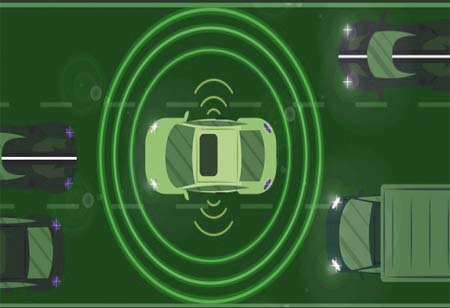

Thank you for Subscribing to Auto Business Outlook Weekly Brief

High-definition metallic and pearlescent paints create eye-catching effects that shift in appearance under different lighting conditions.
The automotive industry has seen significant advancements in various areas, and car paint technology is no exception. Modern automotive paint technologies offer numerous benefits, from aesthetic enhancements to functional improvements. The primary benefit of modern automotive paint technology is the increased durability of the coatings. Advances in paint formulations have made paints more resistant to chipping, scratching, and fading. The durable paints help maintain the vehicle’s appearance over time, even under harsh environmental conditions such as UV exposure, extreme temperatures, and road debris. Advanced automotive paint technology allows for various colors, finishes, and effects, enhancing the aesthetic appeal of vehicles. Advanced polymers and nanotechnology in paint formulations have also contributed to developing self-healing paints that can repair minor scratches, further enhancing the longevity of the vehicle’s finish. Environmental concerns have driven significant innovations in automotive paint technology. Modern automotive paint technology has shifted towards using water-based paints and low-VOC formulations, significantly reducing harmful emissions. New application techniques, such as electrostatic spray painting, minimize paint waste and overspray, further reducing the environmental impact. The advancements make automotive painting more sustainable and eco-friendly, aligning with broader efforts to reduce the automotive industry’s carbon footprint. Innovations like color-shifting paints and special effect coatings enable manufacturers to offer unique and customizable options to consumers, allowing for greater personalization of vehicles. Clear coats with enhanced gloss and depth of color contribute to a more vibrant and luxurious appearance, making vehicles stand out on the road. Modern automotive paints provide superior protection against a variety of external factors. The protective qualities help preserve the vehicle’s structural integrity and resale value. Advanced paint systems often include multiple layers, such as primer, base coat, and clear coat, each designed to provide specific types of protection, from corrosion resistance to UV protection, ensuring comprehensive safeguarding of the vehicle’s exterior. The application of automotive paint has also seen significant improvements, making the process more efficient and cost-effective. The technologies speed up the painting process, increasing production efficiency and reducing labor costs. Quick-drying paints and curing technologies, such as infrared and ultraviolet curing, shorten the time required for the paint to set and harden, enabling faster turnaround times in manufacturing and repair contexts. Advanced automotive car paint technology offers numerous advantages that enhance vehicle coatings' durability, environmental friendliness, aesthetics, protection, and application efficiency. Technological advancements improve the appearance and longevity of vehicles and contribute to sustainability efforts and operational efficiencies in the automotive industry. These benefits underscore the importance of continued investment in research and development to enhance the capabilities and applications of automotive paint technologies.I agree We use cookies on this website to enhance your user experience. By clicking any link on this page you are giving your consent for us to set cookies. More info